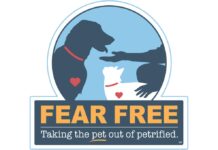I am often asked if feeding a raw diet is best for dogs and cats. I have been a raw feeder for nearly 30 years. My learning began in the late 90s when a second opinion from a holistic vet about a sick cat suggested I change her diet to raw. The first vet could not identify why my cat was failing and suggested I put her to sleep. My cat, Sophie, was around ten years old and was very sick. She was vomiting, losing weight, and generally “looked ill” with no definitive diagnosis. Like many of you, I was a bit surprised by my new vet’s suggestion, but I had nothing to lose in changing her diet.
What is “raw feeding”?
Raw feeding is taking nutrition back to the basics, back to nature. Studies have shown that if given free choice, dogs instinctively choose to get their calories first from fat and protein over carbohydrates*. Dry (kibble) diets are high in carbohydrates, and raw food is low in carbohydrates. This makes sense. Raw foods, being uncooked, do not require carbs to bind into kibble shapes that we’re all familiar with.
Are carbohydrates bad?
Carbohydrates are not all bad. They are a source of fiber. High-quality carbohydrates play a crucial role in metabolism and help to feed the gut microbiome. But carbohydrates have no place in pet food at their high levels.
Dogs and cats need roughly a little less than 50% of their calories from protein and 50% from fat, and less than 5% from carbohydrates*, but kibble-based diets are generally 40-60% carbohydrates, 20-30% protein, and 15-20% fat. The best dry food on the market still contains 26% carbohydrates, and this is one of the most expensive natural pet foods on our shelves today!
“The excessive starch in pet food causes ongoing blood sugar levels, which in and of itself creates a pro-inflammatory state. Corn, wheat, rice, potatoes, tapioca, oats, lentils, chickpeas, barley, quinoa, “ancient grains,” and other carbs found in pet foods also fuel the internal production of advanced glycation end products (AGE) within the body, stimulating perpetual and progressive systemic inflammation” according to Dr. Karen Shaw Becker, DVM.**
Systemic inflammation can include Gingivitis, gastritis, colitis, dermatitis, arthritis, pancreatitis, weight gain, diabetes, and many more conditions.
What Raw Diet is Right For You?
I believe a raw diet works well for most pets. Each pet is unique, and no one can ever claim that one food type or diet is right for everyone. It is best to check with your veterinarian if you are working on a complex medical issue. I have also found that as a pet is elderly, they may choose a low-carb cooked diet over a raw diet.
Hundreds of pet food manufacturers are making high-quality, complete and balanced raw diets these days. Reputable companies are found everywhere, especially at pet supply stores. As proponents of raw foods, pet supply stores are careful to hand-pick from all of the companies to find ones that use human-grade ingredients. They are testing their foods for harmful bacteria and are complete and balanced, so your dogs and cats get proper nutrition.
What else should you know about transitioning and feeding a raw diet?
- Remember to practice safe handling of the meat as you would with your own meat. Dogs and cats are designed to eat a raw diet; we are not. Make sure to wash your hands and use a sponge dedicated to your pet’s feeding bowl only.
- Take it slow. Introduce raw food in small amounts (10-20%) of required daily amount. Increase the amount daily as your pet allows. Add it to what they are currently eating, as pickier pets (cats specifically) are more likely to accept a change slowly.
- If your dog or cat (more common in cats) doesn’t like their new raw food after trying a few times, return it to your pet supply store for a full refund and ask for help on a new one. Just because they may not like one of them doesn’t mean they won’t love another one!
My cat Sophie
Sophie immediately accepted her new raw diet, and her health blossomed. We never knew what she was suffering from exactly. However, I’m pretty sure she had more than one of the “itis’” in the list of inflammatory conditions caused by a high carbohydrate diet. Sophie passed away naturally in 2005 at the age of 20 years old.
* Dr. Mark Roberts, “Macronutrient self-selection in dogs and the impact on markers of health,” Massey University Institute of Veterinary Animal and Biomedical Sciences in New Zealand
** Dr. Karen Shaw Becker, “The Forever Dog,” pg. 121

























